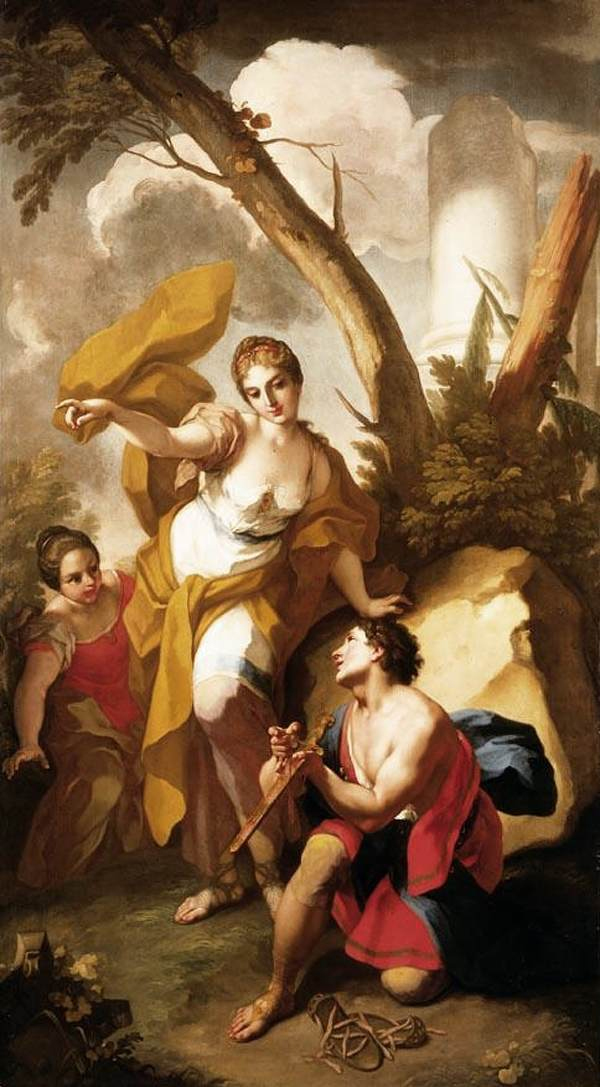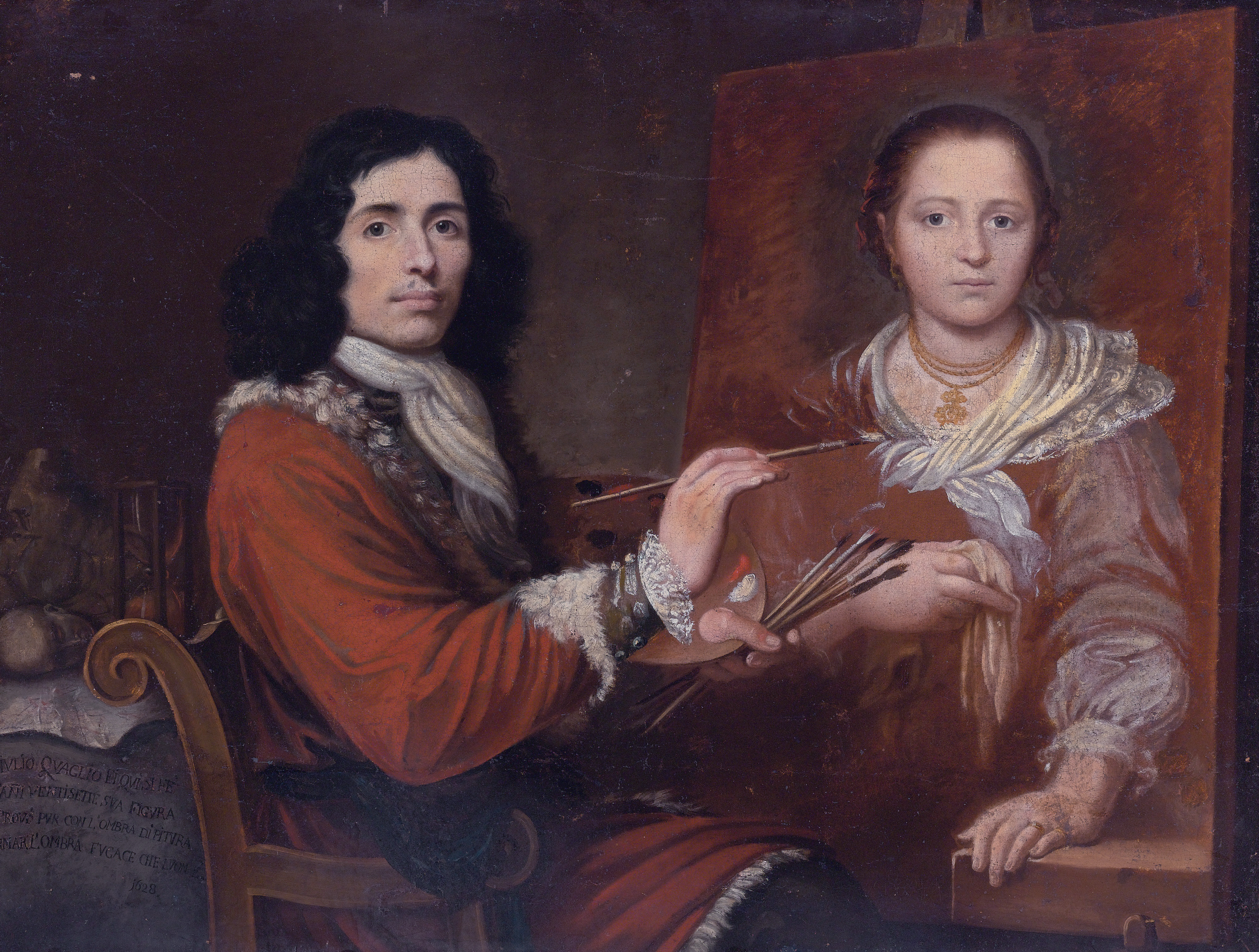|
San Paolo D'Argon
San Paolo d'Argon (Bergamasque: ) is a ''comune'' (municipality) of 5,721 inhabitants in the Province of Bergamo in the Italian region of Lombardy, located about northeast of Milan and about east of Bergamo. The commune is located at the beginning of the Cavallina Valley and it's crossed by two main roads: the Strada Statale 42 del Tonale e della Mendola and the Provincial Road 91 to the Lake Iseo. It is home to a large Cluniac monastery, founded in 1079. It was restored in the 16th century, as shown by the perfectly geometrical Renaissance cloisters (1500 and 1532). In the former refectory there are frescoes (1624) by Giovanni Battista Lorenzetti. The annexed church, dedicated to the Conversion of Saint Paul, was rebuilt between 1684 and 1690 on an ancient romanesque one and represents one of the most impressive examples of Baroque architecture in Bergamo. Its white façade in local marble dates back to 1690. The single wide nave's vault is completely decorated with fresc ... [...More Info...] [...Related Items...] OR: [Wikipedia] [Google] [Baidu] |
Lombardy
Lombardy ( it, Lombardia, Lombard language, Lombard: ''Lombardia'' or ''Lumbardia' '') is an administrative regions of Italy, region of Italy that covers ; it is located in the northern-central part of the country and has a population of about 10 million people, constituting more than one-sixth of Italy's population. Over a fifth of the Italian gross domestic product (GDP) is produced in the region. The Lombardy region is located between the Alps mountain range and tributaries of the Po river, and includes Milan, the largest metropolitan area in the country, and among the largest in the European Union (EU). Of the fifty-eight UNESCO World Heritage Sites in Italy, eleven are in Lombardy. Virgil, Pliny the Elder, Ambrose, Gerolamo Cardano, Caravaggio, Claudio Monteverdi, Antonio Stradivari, Cesare Beccaria, Alessandro Volta and Alessandro Manzoni; and popes Pope John XXIII, John XXIII and Pope Paul VI, Paul VI originated in the area of modern-day Lombardy region. Etymology The name ... [...More Info...] [...Related Items...] OR: [Wikipedia] [Google] [Baidu] |
Giovanni Battista Lorenzetti
Giovanni may refer to: * Giovanni (name), an Italian male given name and surname * Giovanni (meteorology), a Web interface for users to analyze NASA's gridded data * '' Don Giovanni'', a 1787 opera by Wolfgang Amadeus Mozart, based on the legend of Don Juan * Giovanni (Pokémon), boss of Team Rocket in the fictional world of Pokémon * Giovanni (World of Darkness), a group of vampires in ''Vampire: The Masquerade/World of Darkness'' roleplay and video game * "Giovanni", a song by Band-Maid from the 2021 album ''Unseen World'' * ''Giovanni's Island'', a 2014 Japanese anime drama film * '' Giovanni's Room'', a 1956 novel by James Baldwin * Via Giovanni, places in Rome See also * * * Geovani * Giovanni Battista * San Giovanni (other) *San Giovanni Battista (other) San Giovanni Battista is the Italian translation of Saint John the Baptist. It may also refer to: Italian churches * San Giovanni Battista, Highway A11, a church in Florence, Italy * San Giovanni Ba ... [...More Info...] [...Related Items...] OR: [Wikipedia] [Google] [Baidu] |
Cenate Sopra
Cenate Sopra (Bergamasque: ) is a ''comune'' (municipality) in the Province of Bergamo in the Italian region of Lombardy, located about northeast of Milan and about east of Bergamo. As of 31 December 2004, it had a population of 2,248 and an area of .All demographics and other statistics: Italian statistical institute Istat. The municipality of Cenate Sopra contains the ''frazioni'' (subdivisions, mainly villages and hamlets) Sant'Ambrogio, Valpredina, and Piazze. Cenate Sopra borders the following municipalities: Albino, Cenate Sotto, Pradalunga, Scanzorosciate, Trescore Balneario Trescore Balneario (Bergamasque: ) is a town and ''comune'' in the Province of Bergamo, Lombardy, northern Italy. Twin towns * Zuera, Spain * Čelákovice, Czech Republic References {{Authority control Trescore Balneario, .... Demographic evolution Colors= id:lightgrey value:gray(0.9) id:darkgrey value:gray(0.8) id:sfondo value:rgb(1,1,1) id:barra value:rgb(0.6,0.7,0.8 ... [...More Info...] [...Related Items...] OR: [Wikipedia] [Google] [Baidu] |
Cenate Sotto
Cenate Sotto (Bergamasque: ) is a ''comune'' (municipality) in the Province of Bergamo in the Italian region of Lombardy, located about northeast of Milan and about east of Bergamo. As of 31 December 2004, it had a population of 2,947 and an area of .All demographics and other statistics: Italian statistical institute Istat. The municipality of Cenate Sotto contains the ''frazioni'' (subdivisions, mainly villages and hamlets) Cascina Serbello, Tesolta, Quadra, Veneziane, and Brugaletti. Cenate Sotto borders the following municipalities: Cenate Sopra, San Paolo d'Argon, Scanzorosciate, Trescore Balneario Trescore Balneario (Bergamasque: ) is a town and ''comune'' in the Province of Bergamo, Lombardy, northern Italy. Twin towns * Zuera, Spain * Čelákovice, Czech Republic References {{Authority control Trescore Balneario, .... Demographic evolution Colors= id:lightgrey value:gray(0.9) id:darkgrey value:gray(0.8) id:sfondo value:rgb(1,1,1) id:barra ... [...More Info...] [...Related Items...] OR: [Wikipedia] [Google] [Baidu] |
Antonio Balestra
Antonio Balestra (12 August 1666 – 21 April 1740) was an Italian painter of the Rococo period. Biography Born in Verona, he first apprenticed there with Giovanni Zeffio. By 1690 he moved to Venice, where he worked for three years under Antonio Bellucci, then moved to Bologna and then to paint in Carlo Maratta's workshop in Rome. In 1694, he won a prize from the Accademia di San Luca. He later painted both in Verona and Venice; although his influence was stronger in the mainland. His pupils in Verona were Pietro Rotari and Giambettino Cignaroli. In Venice, he painted for the churches of the I Gesuiti and San Zaccaria, and the Scuola della Carita. Pietro Longhi briefly worked under Balestra. In Venice, other pupils or painters he influenced, included Mariotti, Giuseppe Nogari, Mattia Bortoloni and Angelo Trevisani. He also influenced a young Giambattista Pittoni. Among his pupils from Verona were Domenico Pecchio, Domenico Bertini, and Carlo Salis. In painting, Balestra w ... [...More Info...] [...Related Items...] OR: [Wikipedia] [Google] [Baidu] |
Sebastiano Ricci
Sebastiano Ricci (1 August 165915 May 1734) was an Italian painter of the late Baroque school of Venice. About the same age as Piazzetta, and an elder contemporary of Tiepolo, he represents a late version of the vigorous and luminous Cortonesque style of grand manner fresco painting. He was the uncle of Marco Ricci (1676 – 1730), who trained with him, and became an innovator in landscape painting. Early years He was born in Belluno, the son of Andreana and Livio Ricci. In 1671, he was apprenticed to Federico Cervelli of Venice. Others claim Ricci's first master was Sebastiano Mazzoni. In 1678, a youthful indiscretion led to an unwanted pregnancy, and ultimately to a greater scandal, when Ricci was accused of attempting to poison the young woman in question to avoid marriage. He was imprisoned, and released only after the intervention of a nobleman, probably a Pisani family member. He eventually married the mother of his child in 1691, although this was a stormy union ... [...More Info...] [...Related Items...] OR: [Wikipedia] [Google] [Baidu] |
Giuseppe Maria Crespi
Giuseppe Maria Crespi (March 14, 1665 – July 16, 1747), nicknamed Lo Spagnuolo ("The Spaniard"), was an Italian late Baroque painter of the Bolognese School. His eclectic output includes religious paintings and portraits, but he is now most famous for his genre paintings. Giuseppe Crespi, together with Giambattista Pittoni, Giovan Battista Tiepolo, Giovan Battista Piazzetta, Canaletto and Francesco Guardi forms the traditional great Old Masters painters of that period. Biography Crespi was born in Bologna to Girolamo Crespi and Isabella Cospi. His mother was a distant relation of the noble Cospi family, which had ties to the Florentine House of Medici. He was nicknamed "the Spanish One" (Lo Spagnuolo) because of his habit of wearing tight clothes characteristic of Spanish fashion of the time. By age 12 years, he apprenticed with Angelo Michele Toni (1640–1708). From the age of 15–18 years, he worked under the Bolognese Domenico Maria Canuti. The Roman painter ... [...More Info...] [...Related Items...] OR: [Wikipedia] [Google] [Baidu] |
Giulio Quaglio (painter)
Giulio Quaglio the Elder (1610–1658 or after) was an Italian painter of frescoes. He was a follower of Tintoretto. He is known to have worked in Vienna, Salzburg, and Ljubljana. His son, Giulio Quaglio the Younger, was born in Laino and established himself in the Friuli about the end of the 17th century. Giulio the Younger, who died in 1720, is best known for his frescoes at the chapel of the Monte di Pietà, in Udine. They are both part of a large family of artists and architects from the town of Laino, between Lake Lugano and Lake Como, and which included Giuseppe Quaglio and his sons Lorenzo the Younger, Simon, and Domenico Domenico is an Italian given name for males and may refer to: People * Domenico Alfani, Italian painter * Domenico Allegri, Italian composer * Domenico Alvaro, Italian mobster * Domenico Ambrogi, Italian painter * Domenico Auria, Italian archit ...; Lorenzo Quaglio the Elder; and Giovanni Maria Quaglio the Elder and his son. References * ... [...More Info...] [...Related Items...] OR: [Wikipedia] [Google] [Baidu] |
Marble
Marble is a metamorphic rock composed of recrystallized carbonate minerals, most commonly calcite or Dolomite (mineral), dolomite. Marble is typically not Foliation (geology), foliated (layered), although there are exceptions. In geology, the term ''marble'' refers to metamorphosed limestone, but its use in stonemasonry more broadly encompasses unmetamorphosed limestone. Marble is commonly used for Marble sculpture, sculpture and as a building material. Etymology The word "marble" derives from the Ancient Greek (), from (), "crystalline rock, shining stone", perhaps from the verb (), "to flash, sparkle, gleam"; Robert S. P. Beekes, R. S. P. Beekes has suggested that a "Pre-Greek origin is probable". This Stem (linguistics), stem is also the ancestor of the English language, English word "marmoreal," meaning "marble-like." While the English term "marble" resembles the French language, French , most other European languages (with words like "marmoreal") more closely resemb ... [...More Info...] [...Related Items...] OR: [Wikipedia] [Google] [Baidu] |
Baroque
The Baroque (, ; ) is a style of architecture, music, dance, painting, sculpture, poetry, and other arts that flourished in Europe from the early 17th century until the 1750s. In the territories of the Spanish and Portuguese empires including the Iberian Peninsula it continued, together with new styles, until the first decade of the 19th century. It followed Renaissance art and Mannerism and preceded the Rococo (in the past often referred to as "late Baroque") and Neoclassical styles. It was encouraged by the Catholic Church as a means to counter the simplicity and austerity of Protestant architecture, art, and music, though Lutheran Baroque art developed in parts of Europe as well. The Baroque style used contrast, movement, exuberant detail, deep colour, grandeur, and surprise to achieve a sense of awe. The style began at the start of the 17th century in Rome, then spread rapidly to France, northern Italy, Spain, and Portugal, then to Austria, southern Germany, and Russia. B ... [...More Info...] [...Related Items...] OR: [Wikipedia] [Google] [Baidu] |
Romanesque Architecture
Romanesque architecture is an architectural style of medieval Europe characterized by semi-circular arches. There is no consensus for the beginning date of the Romanesque style, with proposals ranging from the 6th to the 11th century, this later date being the most commonly held. In the 12th century it developed into the Gothic style, marked by pointed arches. Examples of Romanesque architecture can be found across the continent, making it the first pan-European architectural style since Imperial Roman architecture. The Romanesque style in England and Sicily is traditionally referred to as Norman architecture. Combining features of ancient Roman and Byzantine buildings and other local traditions, Romanesque architecture is known by its massive quality, thick walls, round arches, sturdy pillars, barrel vaults, large towers and decorative arcading. Each building has clearly defined forms, frequently of very regular, symmetrical plan; the overall appearance is one of simplic ... [...More Info...] [...Related Items...] OR: [Wikipedia] [Google] [Baidu] |


_-_The_Prodigal_Son_-_732311_-_National_Trust.jpg)



